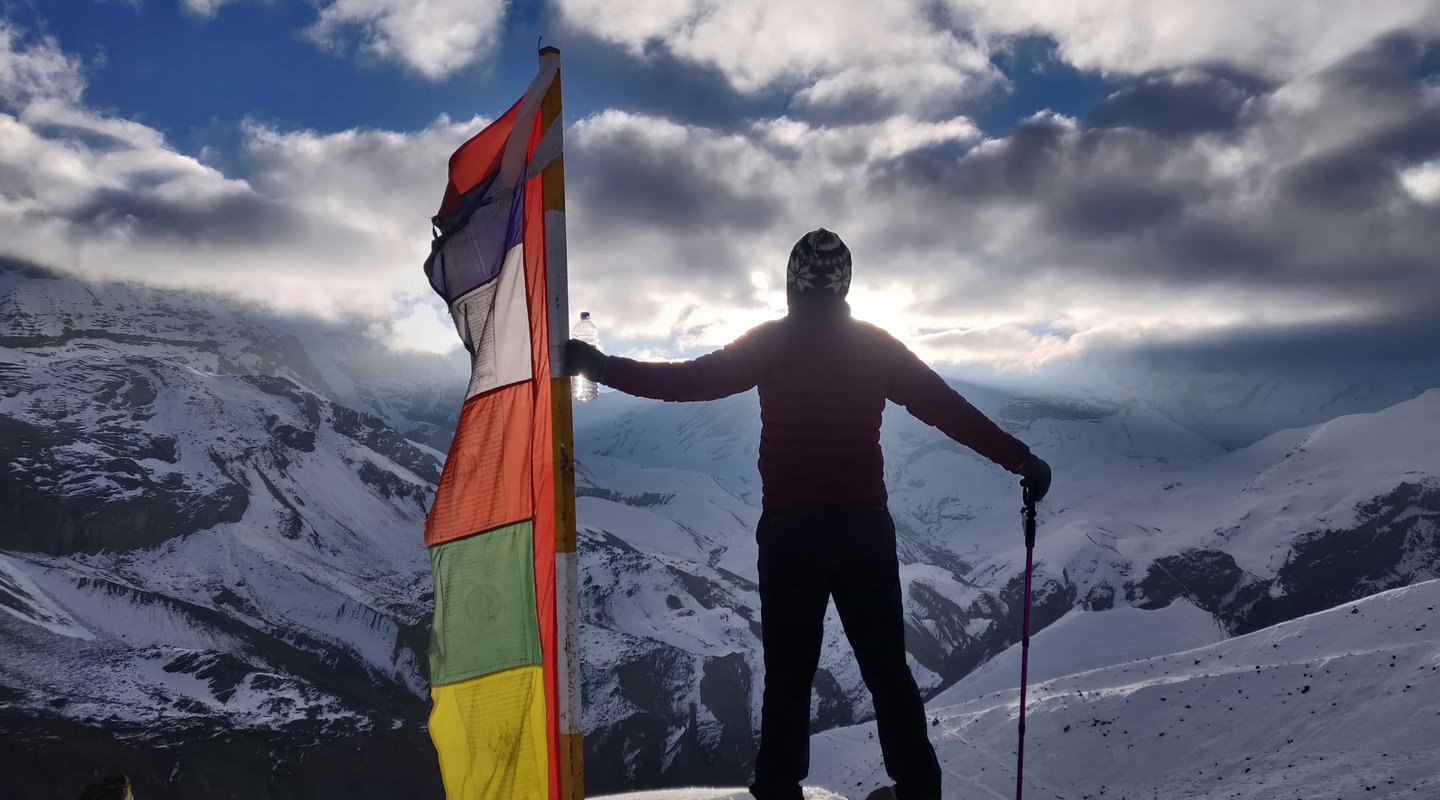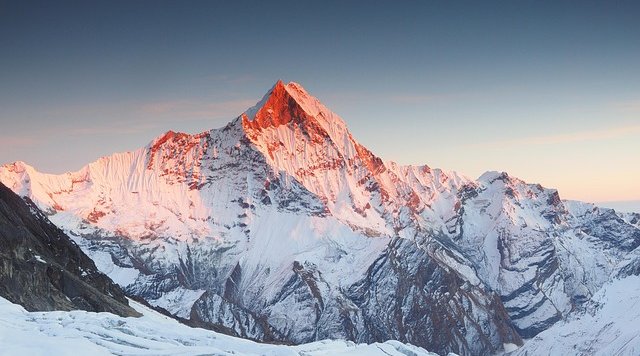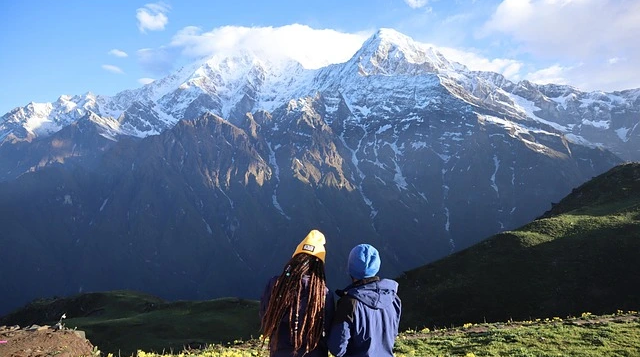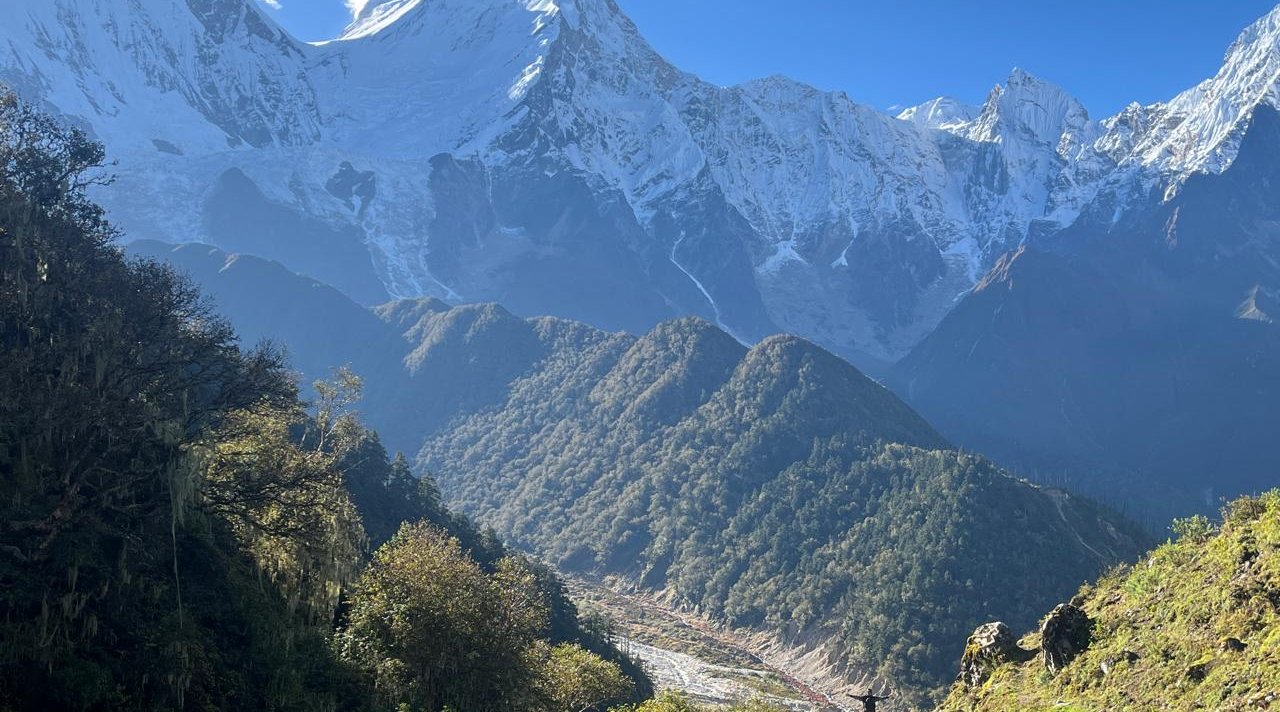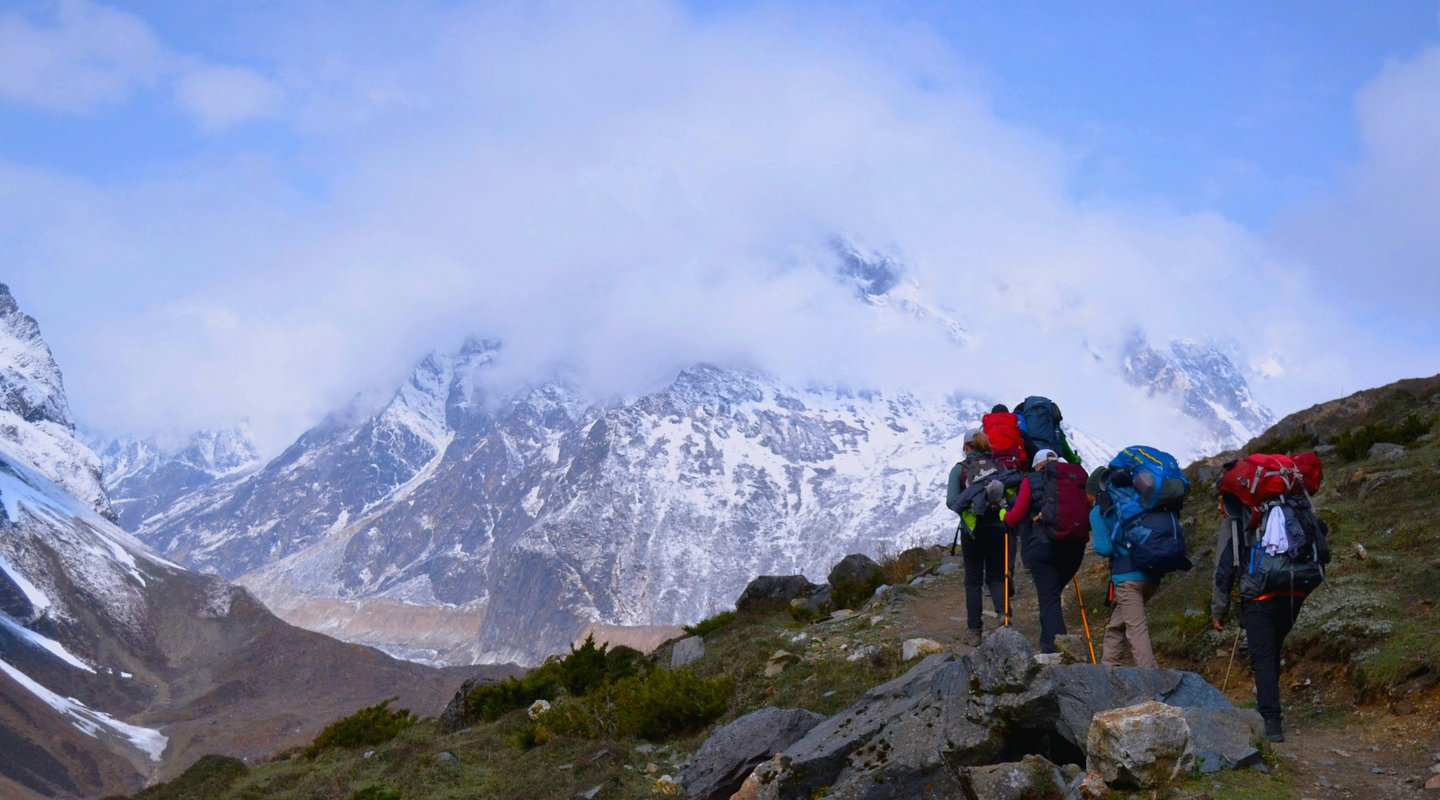The North Annapurna Base Camp trek offers one of the most spectacular Himalayan mountain vistas in Nepal, but timing your adventure can make the difference between crystal-clear panoramas and cloud-obscured peaks. Understanding the best season for trekking this remarkable route ensures you'll witness the full glory of the Annapurna massif while enjoying optimal trekking weather conditions. This comprehensive guide reveals when to plan your journey for the perfect balance of favorable weather, stunning mountain scenery in Annapurna, and comfortable trail conditions.
Why Timing Matters for Your North ABC Adventure
The North ABC trail experiences dramatic seasonal variations that directly impact your trekking experience. From the clarity of Nepal mountain views to trail accessibility and accommodation availability, choosing the right time transforms a good trek into an unforgettable journey. Weather patterns in the Annapurna region follow predictable cycles, allowing strategic planning for optimal conditions.
Your timing decision affects multiple aspects of the trek:
- Visibility of the Annapurna mountain vistas
- Trail conditions and safety
- Crowd levels and accommodation availability
- Cultural experiences and local festivals
- Wildlife spotting opportunities
Optimal Seasons: Spring (March-May) and Autumn (September-November)
Spring Trekking Annapurna: Nature's Grand Display
Spring trekking Nepal offers a magical combination of warming temperatures and nature's awakening. The season brings stable weather patterns ideal for high-altitude trekking, with the added bonus of witnessing the Himalayas' most colorful display.
Why Spring Excels:
- Crystal-clear morning views before afternoon clouds
- Rhododendron forests in full bloom
- Moderate temperatures at all elevations
- Active wildlife after winter dormancy
- Cultural festivals in local villages
The spring weather for ABC trek typically features morning temperatures of 5-10°C at lower elevations, rising to pleasant 15-20°C afternoons. However, base camp remains cold, with nighttime temperatures dropping to -5°C even in May.
Autumn Trekking North ABC: Peak Visibility Season
Autumn trekking ABC represents the gold standard for mountain photography enthusiasts. Post-monsoon atmospheric conditions create unparalleled clarity, revealing distant peaks usually hidden by haze.
Autumn Advantages:
- Clearest Himalayan panoramic views of the year
- Stable weather with minimal precipitation
- Comfortable trekking temperatures
- Harvest season cultural experiences
- Perfect conditions for sunrise views at ABC
Trekking Annapurna in October particularly stands out, offering the ideal balance between clear skies and comfortable temperatures before winter's approach.
Monthly Breakdown: Temperature Ranges and Weather Conditions
March: Spring's Awakening
March marks the transition from winter's grip to spring's embrace. Early March can still experience winter conditions at higher elevations, but conditions improve rapidly.
Weather Characteristics:
- Lower elevations: 5-15°C
- Base camp: -10 to -5°C
- Precipitation: Minimal
- Visibility: Improving daily
April: Prime Spring Conditions
Annapurna Base Camp trek in April offers perhaps the best overall conditions for those seeking moderate temperatures and spectacular rhododendron displays.
Weather Patterns:
- Lower elevations: 10-20°C
- Base camp: -5 to 0°C
- Clear mornings, afternoon clouds
- Rhododendrons at peak bloom
May: Pre-Monsoon Warmth
May brings warmer conditions but increasing afternoon cloud buildup. Early starts become essential for clear mountain views.
Temperature Ranges:
- Lower elevations: 15-25°C
- Base camp: -2 to 5°C
- Increasing humidity
- Afternoon thunderstorms possible
September: Post-Monsoon Clarity
September sees monsoon's retreat and autumn's arrival. Early September may still experience occasional rain, but conditions improve rapidly.
Weather Overview:
- Lower elevations: 10-20°C
- Base camp: -5 to 0°C
- Clearing skies
- Fresh, clean air
October: Autumn Perfection
October delivers the clearest skies and most stable weather of the year, making it peak season for good reason.
Optimal Conditions:
- Lower elevations: 8-18°C
- Base camp: -8 to -3°C
- Minimal precipitation
- Maximum visibility
November: Winter's Approach
November remains excellent for trekking, though temperatures drop noticeably. The trade-off brings even clearer views and fewer crowds.
Late Autumn Weather:
- Lower elevations: 5-15°C
- Base camp: -12 to -5°C
- Crystal-clear skies
- Cold but stable conditions
Seasonal Highlights: Rhododendron Blooms and Clear Mountain Views
Spring's Floral Spectacular
The North ABC trek itinerary tips for spring must include timing for rhododendron season. These vibrant blooms transform the landscape from 2,500-3,500 meters elevation.
Rhododendron Calendar:
- Early March: First blooms at lower elevations
- Mid-March to April: Peak bloom period
- May: Higher elevation blooms
The contrast between crimson rhododendrons and snow-capped peaks creates unparalleled photographic opportunities along the trekking routes Nepal.
Autumn's Crystal-Clear Vistas
Best season for North ABC views undoubtedly arrives with autumn's atmospheric conditions. The post-monsoon air clarity reveals details invisible during other seasons.
Visibility Highlights:
- Dhaulagiri visible from multiple viewpoints
- Machapuchare's complete profile
- Distant peaks beyond Annapurna massif
- Star-filled night skies
Monsoon/Winter Considerations: Why to Avoid June-August
Monsoon Trekking Challenges
While monsoon trekking challenges don't make the trek impossible, they significantly impact the experience. June through August brings:
Major Obstacles:
- Daily rainfall, especially afternoons
- Cloud-obscured mountain views
- Slippery, leech-infested trails
- Possible landslides and trail damage
- Limited flight reliability
For determined monsoon trekkers, rainy season trekking tips include waterproof everything, anti-leech measures, and flexible itineraries accommodating weather delays.
Winter Trekking Precautions
December through February presents different challenges requiring serious winter trekking precautions.
Winter Realities:
- Extreme cold at altitude (-20°C possible)
- Snow-blocked high passes
- Limited teahouse operations
- Shortened daylight hours
- Essential specialized gear
However, winter rewards include absolute solitude, pristine snow landscapes, and potentially spectacular clear days between weather systems.
Month-by-Month Weather Chart
January - Deep Winter Challenges
- Lower Elevation: 0-10°C | Base Camp: -20 to -10°C
- Precipitation: Minimal snowfall possible
- Visibility: Good on clear days
- Trekking Suitability: Challenging - Requires full winter gear and experience
February - Winter's Gradual Retreat
- Lower Elevation: 2-12°C | Base Camp: -18 to -8°C
- Precipitation: Minimal with occasional snow
- Visibility: Good and improving
- Trekking Suitability: Moderate - Still cold but clearer days emerging
March - Spring's Promise
- Lower Elevation: 5-15°C | Base Camp: -10 to -5°C
- Precipitation: Low with rare showers
- Visibility: Steadily improving
- Trekking Suitability: Good - Spring conditions beginning, rhododendrons starting
April - Peak Spring Season
- Lower Elevation: 10-20°C | Base Camp: -5 to 0°C
- Precipitation: Low with occasional afternoon clouds
- Visibility: Excellent morning views
- Trekking Suitability: Excellent - Ideal temperatures and blooming landscapes
May - Pre-Monsoon Warmth
- Lower Elevation: 15-25°C | Base Camp: -2 to 5°C
- Precipitation: Increasing afternoon showers
- Visibility: Good mornings, cloudy afternoons
- Trekking Suitability: Good - Warm days but increasing cloud cover
June - Monsoon Arrival
- Lower Elevation: 18-28°C | Base Camp: 0 to 10°C
- Precipitation: High daily rainfall
- Visibility: Poor with persistent clouds
- Trekking Suitability: Not recommended - Heavy rains and limited views
July - Peak Monsoon
- Lower Elevation: 20-30°C | Base Camp: 5 to 12°C
- Precipitation: Very high with continuous rain
- Visibility: Very poor
- Trekking Suitability: Not recommended - Trails hazardous, views obscured
August - Late Monsoon
- Lower Elevation: 20-30°C | Base Camp: 5 to 12°C
- Precipitation: Very high but beginning to decrease
- Visibility: Very poor with rare clearings
- Trekking Suitability: Not recommended - Still heavy rains and slippery trails
September - Autumn's Dawn
- Lower Elevation: 10-20°C | Base Camp: -5 to 0°C
- Precipitation: Rapidly decreasing
- Visibility: Improving daily
- Trekking Suitability: Good - Post-monsoon freshness emerging
October - Autumn Perfection
- Lower Elevation: 8-18°C | Base Camp: -8 to -3°C
- Precipitation: Minimal to none
- Visibility: Excellent with crystal-clear skies
- Trekking Suitability: Excellent - Peak conditions for views and weather
November - Late Autumn Clarity
- Lower Elevation: 5-15°C | Base Camp: -12 to -5°C
- Precipitation: Minimal with stable conditions
- Visibility: Excellent with crisp air
- Trekking Suitability: Very Good - Cold but spectacular visibility
December - Winter's Return
- Lower Elevation: 2-12°C | Base Camp: -18 to -8°C
- Precipitation: Minimal but possible snow
- Visibility: Good between weather systems
- Trekking Suitability: Challenging - Full winter conditions established
Trekking Preparation and Planning Tips
Physical Fitness for Trekking
Success on the North ABC trail requires adequate physical fitness for trekking. Begin training at least 8 weeks before departure:
Training Essentials:
- Cardiovascular endurance building
- Leg strength development
- Core stability exercises
- Altitude simulation if possible
- Practice hikes with loaded backpack
Packing for ABC Trek
Packing for ABC trek varies significantly by season:
Spring Essentials:
- Layered clothing system
- Rain protection
- Sun protection (high UV at altitude)
- Moderate sleeping bag (-10°C)
Autumn Requirements:
- Warmer layers for cold nights
- Down jacket essential
- Four-season sleeping bag (-15°C)
- Thermal underwear
Permits for Annapurna Trek
Regardless of season, permits for Annapurna trek remain consistent:
- Annapurna Conservation Area Permit (ACAP)
- TIMS card (as of current regulations)
- Valid travel insurance
- Passport with Nepal visa
Guided vs. Solo Trekking
The guided vs. solo trekking decision impacts seasonal considerations:
Guided Trek Benefits:
- Local weather knowledge
- Alternative route options
- Emergency support
- Cultural interpretation
Solo Considerations:
- Greater flexibility
- Self-reliance essential
- Weather assessment skills crucial
- Emergency planning vital
Cultural and Natural Highlights
Gurung Villages on ABC Trek
Gurung villages on ABC trek offer authentic cultural experiences varying by season:
Spring Village Life:
- Agricultural activities beginning
- Festival preparations
- Traditional ceremonies
Autumn Experiences:
- Harvest celebrations
- Clear mountain ceremonies
- Community gatherings
Annapurna Flora and Fauna
The region's Annapurna flora and fauna showcase seasonal variations:
Spring Wildlife:
- Himalayan tahr more visible
- Bird migration patterns
- Butterfly emergence
- Active langur monkeys
Autumn Nature:
- Wildlife preparing for winter
- Migratory birds passing through
- Clear wildlife tracking conditions
Best Viewpoints North ABC
Best viewpoints North ABC deliver maximum impact during optimal seasons:
Premier Viewing Locations:
- Koto village panorama
- High Camp sunrise point
- Base Camp amphitheater
- Return route perspectives
Each viewpoint offers unique angles on the Himalayan views from Annapurna Base Camp, best appreciated in clear weather conditions.
Short Treks and Alternative Routes
Short Treks to ABC
Time-conscious trekkers seeking short treks to ABC should prioritize peak season for efficiency:
Condensed Itinerary Options:
- 7-day rapid ascent (autumn only)
- 9-day standard route
- 12-day cultural immersion
Annapurna Circuit Options
Combining Annapurna circuit options with North ABC requires careful seasonal planning:
Circuit Considerations:
- Thorong La Pass snow conditions
- Extended weather windows needed
- Spring or autumn essential
- Acclimatization paramount
Weather Forecasting and Real-Time Conditions
Annapurna Weather Forecast
Modern Annapurna weather forecast resources enhance planning:
Reliable Sources:
- Nepal Meteorological Department
- Mountain-forecast.com
- Local guide networks
- Satellite imagery apps
Temperature at ABC
Understanding temperature at ABC patterns helps gear selection:
Base Camp Conditions:
- Dawn: Coldest temperatures
- Midday: Brief warming period
- Afternoon: Cloud buildup common
- Night: Rapid temperature drop
Planning Your Perfect Trek
Preparing for North ABC Trek
Preparing for North ABC trek requires balancing multiple factors:
Decision Matrix:
- Personal cold tolerance
- Photography priorities
- Crowd preferences
- Cultural interest level
- Fitness timeline
Trekking in Clear Skies
Maximizing opportunities for trekking in clear skies involves:
Strategy Tips:
- Early morning starts
- Flexible itinerary
- Weather window monitoring
- Backup days planned
Ready to experience the magnificence of North Annapurna Base Camp? Start planning your perfectly-timed trek with professional guides who understand seasonal nuances.
FAQ Section
Q: What's the absolute best time to trek Annapurna Base Camp for mountain views?
A: October offers the clearest mountain views with stable weather. The post-monsoon atmosphere provides exceptional visibility, revealing distant peaks and crisp details of the Annapurna massif. Early November runs a close second with even fewer crowds.
Q: Can beginners attempt the North ABC trek in spring?
A: Yes, spring (particularly April) is ideal for beginners. The moderate temperatures, stable weather, and gradual acclimatization opportunities make it perfect for first-time high-altitude trekkers. The rhododendron blooms provide additional motivation during challenging sections.
Q: How different are weather conditions between North and South ABC routes?
A: The North ABC route generally experiences similar seasonal patterns but with slight variations. The northern approach offers more shelter from afternoon winds and may have clearer morning views due to topographical differences. However, it can be slightly colder due to less sun exposure on north-facing slopes.
Q: Is it worth trekking during the shoulder seasons?
A: Early March and late November offer excellent trekking with fewer crowds. While temperatures are colder, the clear skies and solitude compensate. These periods suit experienced trekkers comfortable with winter conditions but wanting to avoid peak season crowds.
Q: What if I can only trek during monsoon season?
A: While challenging, monsoon trekking (June-August) is possible with proper preparation. Focus on the journey rather than views, pack extensive waterproof gear, and appreciate the lush landscapes and cultural experiences. Consider shorter itineraries and have flexibility for weather delays.
Conclusion: Your Perfect North ABC Adventure Awaits
Choosing the best time to trek North ABC ultimately depends on your priorities, but spring and autumn consistently deliver the optimal combination of weather, views, and trail conditions. Whether you're drawn to April's rhododendron spectacular or October's crystal-clear panoramas, proper timing transforms the North Annapurna Base Camp trek into a life-changing adventure.
The mountains stand eternal, but the window for perfect conditions remains limited. Start your trek preparation tips implementation today, and soon you'll stand at base camp, surrounded by some of Earth's most dramatic mountain scenery Annapurna has to offer.
Don't let another season pass without experiencing these Himalayan trekking seasons at their finest. Contact our expert team to begin planning your perfectly-timed North ABC adventure, ensuring you'll witness the Annapurna sanctuary in all its glory.
Contact Information:

